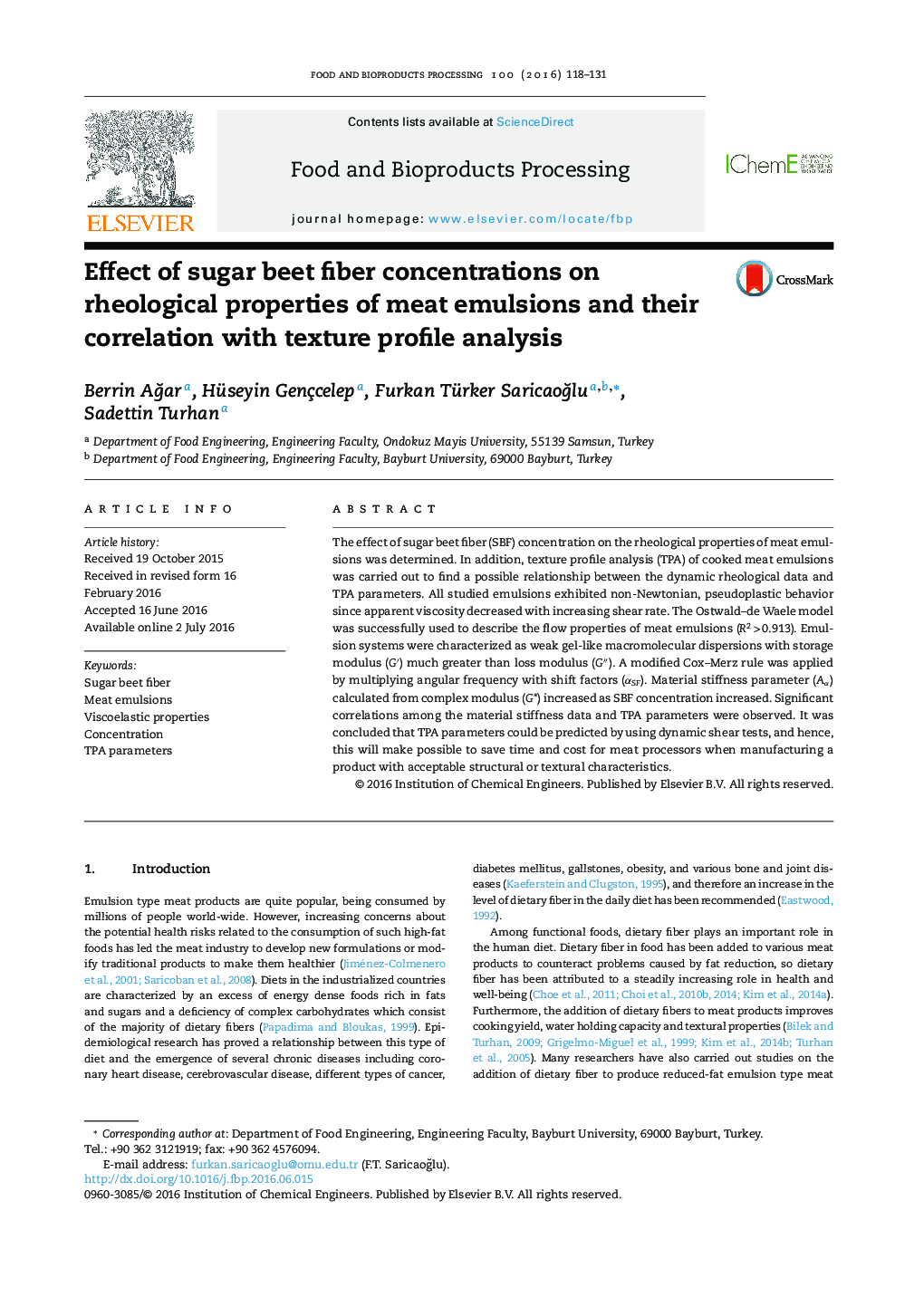| Article ID | Journal | Published Year | Pages | File Type |
|---|---|---|---|---|
| 6451711 | Food and Bioproducts Processing | 2016 | 14 Pages |
â¢Meat emulsions prepared with SBF demonstrated non-Newtonian behavior.â¢Addition of SBF increased apparent viscosity and dynamic shear modulus.â¢Cox-Merz rule was applied by multiplying angular frequency with shift factors.â¢Correlations among the material stiffness and TPA parameters were significant.â¢Prediction of TPA will make possible to save time and cost for meat processors.
The effect of sugar beet fiber (SBF) concentration on the rheological properties of meat emulsions was determined. In addition, texture profile analysis (TPA) of cooked meat emulsions was carried out to find a possible relationship between the dynamic rheological data and TPA parameters. All studied emulsions exhibited non-Newtonian, pseudoplastic behavior since apparent viscosity decreased with increasing shear rate. The Ostwald-de Waele model was successfully used to describe the flow properties of meat emulsions (R2 > 0.913). Emulsion systems were characterized as weak gel-like macromolecular dispersions with storage modulus (Gâ²) much greater than loss modulus (Gâ³). A modified Cox-Merz rule was applied by multiplying angular frequency with shift factors (αSF). Material stiffness parameter (Aα) calculated from complex modulus (G*) increased as SBF concentration increased. Significant correlations among the material stiffness data and TPA parameters were observed. It was concluded that TPA parameters could be predicted by using dynamic shear tests, and hence, this will make possible to save time and cost for meat processors when manufacturing a product with acceptable structural or textural characteristics.
Graphical abstractDownload high-res image (103KB)Download full-size image
